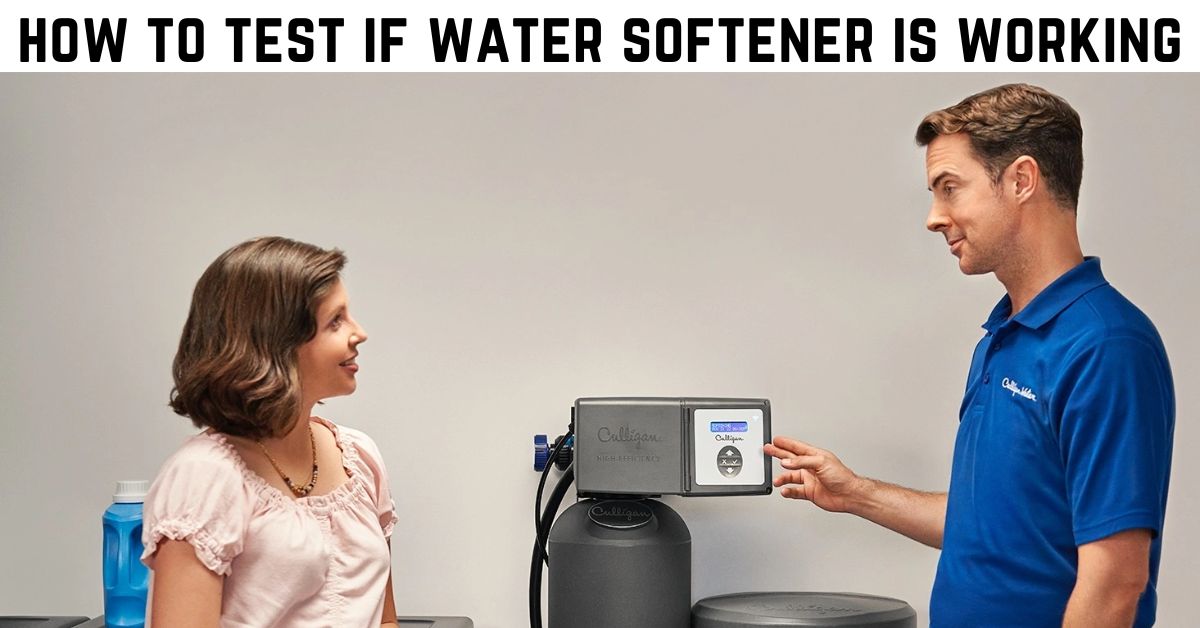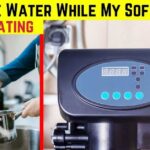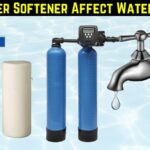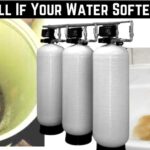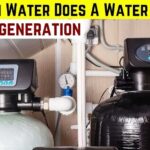If you have a softener in your home, it’s essential to know how to test if Water Softener is working.
It will help ensure you get the most out of your softener and that your water is treated correctly.
There are a few different ways to test your water softener, so read on for instructions on how to do each.
How To Tell If Your Water Softener Is Working?
If you have a softener, it’s essential to know how to test it to ensure it’s working correctly. There are a few different ways to do this, so read on for instructions on each method.
1. Test the hardness of your water. It can do this with a water hardness test strip, which It can purchase at most hardware stores.
Follow the instructions included with the kit to test the water hardness minerals of your untreated water. If the water is soft, then the softener is working correctly.
2. Check for soap scum buildup. Soap scum buildup is common in homes with hard water, but it’s not an issue with soft water.
If you notice soap scum buildup on your fixtures or in your tub or shower, it’s a common sign that your type of water softener is not working correctly.
3. Check for mineral deposits. Another common issue with hard water is mineral deposits, which can build up on fixtures and in appliances wrong time.
If you notice any mineral deposits in your home, it’s a bad sign that your standard water softener is not working correctly.
4. Have your water professionally tested. If you need help determining whether your beads in the water system are working correctly, you can always have your water professionally tested.
It will give you an accurate idea of the water hardness minerals of your water outlets and whether or not the softener resin tank is doing its job.
5. Test the pH of your water. Acidic water can signal that your type of water softener resin tank is not working correctly.
You can test the pH of your water with a simple pH test kit, which you can purchase at most hardware stores.
6. Check for staining. Staining on fixtures and appliances can be caused by hard water. If you notice any staining in your home, it’s a sign that your water softener resin tank is not working
7. Has your softener been serviced? If you still need to determine whether your control water treatment system is working correctly, you can always have it serviced by a professional.
It will ensure that your softener resin tank is in good working condition and operating efficiently.
Following these simple steps, you can quickly test your water treatment professional to ensure it’s working correctly.
What Are Common Softener Problems:
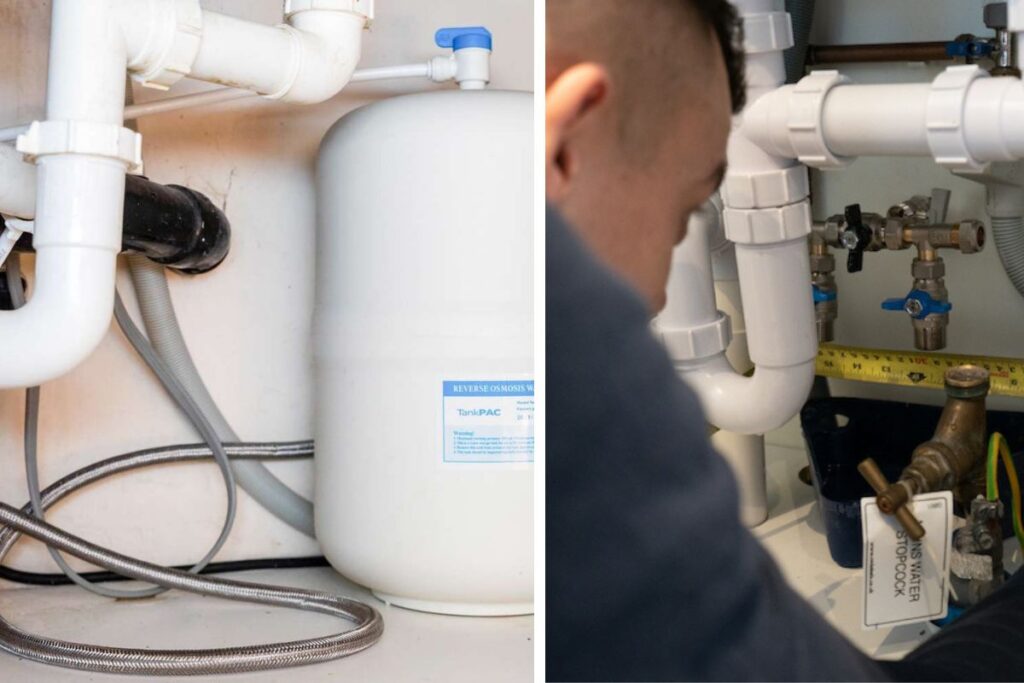
1. No water at all in the softener tank –
It could be due to several reasons, such as a power outage or a tripped breaker.
If there is no power to the unit, it will not be able to regenerate, and It will eventually use up the untreated water in the tank.
2. Not enough water in the softener tank –
It could be due to several reasons, such as a leaking bypass valve or a clogged line.
If there is not enough water in the tank, the unit will not be able to regenerate, and the water in the house will eventually become very hard.
3. Water is coming out of the overflow pipe –
It could be due to several reasons, such as high water pressure or a defective valve.
If water comes from the overflow pipe, it is essential to turn off the power to the unit and call a plumber.
4. Water is coming out of the faucet –
It could be due to several reasons, such as a clogged line or a defective valve.
If water is coming out of the faucet, it is essential to turn off the power to the unit and call a plumber.
5. Water is not soft –
It could be due to several reasons, such as an incorrect setting on the unit or a clogged line.
If the water is not soft, checking the unit’s settings and ensuring all lines are clear is essential.
6. Water is leaking from the unit –
It could be due to several reasons, such as a cracked tank or a loose fitting.
If community water leaks from the unit, it is essential to turn off the power to the team and call a plumber.
7. Unit is not regenerating –
It could be due to several reasons, such as an incorrect setting on the unit or a power outage.
If the unit is not regenerating, it is essential to check its settings and ensure there is power.
If you have any of these problems, you must call a plumber.
A professional can often fix these problems, but if they are not set, they could cause significant damage to your home.
How Do I Know If My Water Softener Is Regenerating?
It’s essential to regularly test your water softener to regenerate to ensure it works correctly.
There are a few different ways to check this.
1. Check the solar salt level in the brine tank. The solar salt level should be between 2/3 and 3/4 whole.
2. Check the hardness of your entire water. It can do it with a water hardness test kit available at most hardware stores.
3. Check the pressure gauge on your softener. The pressure should be between 10 and 12 PSI.
4. Listen for the entire water appliances to regenerate. You should hear a faint humming noise from the unit when it restores.
Regenerating your scale control water treatment is essential to keeping your home’s water supply safe and clean.
Common Causes Of Regeneration Issues Include:
1. Not enough tanks with salt in the brine tank
2. It used the wrong type of salt deposits in the brine tank
3. There’s too much water consumption in the brine tank
4. The brine tank is located in a humid area
5. The resin bed is fouled
6. There’s a leak in the brine tank
7. The control valve is not working properly
8. The drain line is clogged
If you’re experiencing any of these problems, it’s essential to take action to fix them.
Otherwise, your brands of water softeners will continue to have regeneration issues and won’t be able to function correctly.
What Factors Affect Softener Performance?
Several factors can affect how well your softener is working. These include:
- The type of water you have – If you have hard water, it will take longer for your softener to work.
- The amount of water you use – If you use a lot of water, your softener will have to work harder to keep up.
- The water temperature – Cold water is more difficult for a softener to treat than warm water.
- The amount of salt in the water – If there are not enough salt pellets in the water, your softener will not be able to work correctly.
- The type of salt you use – Some salt (sodium ions) are better for softeners than others.
- The age of your softener – Older water softeners may not work as well as newer ones. If you have problems with your softener, check these factors to see if they cause it.
You may need to adjust the settings on your softener or add more rock salt buildups to the water.
Advantages and Disadvantages Of Home Water Softening:
Advantages
-The mineral buildup in hard water levels can cause a buildup of scale on fixtures and appliances. This scale can be challenging to remove and can cause long-term damage.
-Softeners can prolong the lifespan of appliances that use water sources, such as dishwashers, washing machines, and water heaters.
-Soap will lather more efficiently and produce more suds in the soft water supply. As a result, you can use less liquid soap and shampoo, saving money from time to time.
-Soft water can make your skin and hair feel softer and smoother because there is no longer a buildup of mineral ions on them.
-Clothes washed in a soft water source will also be smoother and brighter.
-Softeners can save you time and energy by making cleaning surfaces around your home more accessible.
Disadvantages
-Softened water requires electricity, adding to your monthly energy bill.
-You will need to periodically add salt to the feed water softener device, which can be inconvenient.
-Softeners can take up a lot of space, especially if you have a large home.
-If you have well water, a softener with potassium chloride can increase the sodium level in your gallons of water. It is something to remember if you are on a low-sodium diet.
-Basic water softener troubleshooting can be expensive, especially if you need a large unit for your home.
If you have water hardness levels, a softening process can be a great way to improve the quality of your water.
However, you should be aware of some disadvantages to using a softener with potassium chloride before making a purchase.
If I Have A Home Softener, How Do I Use It Correctly?
1. Check the Manual- Every home softener is different. Check your manual for specific instructions on how to use and maintain your model.
2. Test the Water- Use a water testing kit to check the hardness of your city water systems. If it’s high, then you need to use your softener.
3. Set the Meter- Once you know how hard your tap water usage is, you can set the meter on your softener accordingly. It will ensure that it treats your tap water properly.
4. Hook Up the Hoses- Ensure all drain hoses are correctly connected to your softener and plumbing. If they’re not, then your softener won’t work correctly.
5. Fill the Tank- Most home softeners have a brine injector that needs to be filled with salty water. Follow the directions in your manual on how to do this properly.
6. Regenerate the Unit- Depending on the model of your home softener, you may need to regenerate it periodically. It helps to clean the unit and keep it working correctly.
7. Perform Maintenance- Regularly check your home softener unit to ensure it works correctly.
It includes checking the salt level, the drain hoses, and the meter. If you notice anything not working correctly, then call a professional for help.
These seven steps will ensure that you use your home softener correctly.
How To Find Out If Your Softener Is Running Low On Salt?
The most common way to test if your softener is running low on salt is to check the salt level in the brine tank.
The brine tank is where the softener regenerates or recharges itself.
1. To check the salt level, remove the lid of the brine tank and look inside.
If the salt level is below the halfway mark, your softener is running low on salt and must be refilled.
2. Another way to test if your softener is running low on salt is to check the hardness of your water.
If the hardness of your water is high, then it means that your softener is not working as efficiently as it should and needs to be recharged with salt.
You can test the hardness of your water with a water hardness test kit.
3. Performance of your appliance. If your softener is not performing as well as it should, it might be because it needs more salt.
Another way to test if your softener is running low on salt is to listen for a
4. Humming noise. The softener works if you hear a humming noise but needs more salt.
If you see any of these signs, then it means that your softener is running low on salt and needs to be refilled.
What Happens If You Keep Using The Water Softener Without Salt?
If you keep using your softener without salt, the resin beads will eventually become clogged with minerals and will no longer be able to soften the water.
It can lead to several problems, including:
– Your clothes may need cleaner when washing them in hard water.
– Your dishes may have water spots after being washed in hard water.
– Your hair and skin may dry and irritated after showering in hard water.
– You may start to see mineral deposits on fixtures and appliances that use hard water.
– Your softener will become less efficient and need to be replaced sooner.
If you notice any of these problems, it’s essential to check the salt level in your water softener and add more if needed.
You may also need to clean the resin beads if they have become clogged with minerals.
Conclusion: (How To Test If Water Softener Is Working?)
If your home has a softener, it’s essential to know how to test if it is working.
Following the simple steps above, you can ensure that your water softener is operating correctly and provide your family with quality, softened water.
